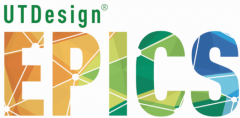As the semester comes to an end, our project approaches being finished. Despite making slow progress in the early stages, we’ve made tremendous surges in the last month, including the following changes:
Latch Finalization + Placement Optimization:
After testing, it was evident that the latch was stronger and thus better suited for our needs. Because of its durability, we were able to use fewer latches than previously. In addition, instead of having two latches on one side, we decided to place on on each side and orient them facing opposite directions. This serves to prevent the rail from bending inward or outward and to balance strain by having opposing pulls.
Socket Construction for Attachment of Stabilizers:
Previously, the vertical leg was permanently attached to the model. Users would unfold the leg, then use latches to hold it in place once it was fully upright. This set-up was functional but bulky and messy – lots of moving parts with the leg and hinges. Using CAD, we designed a socket & key solution, where a detachable leg is inserted into the socket, then held in place by a pin. Two variations are used for each stabilizer: one straight/vertical and one at an angle.




Replacement of Previous Leg Base:
Referring to the previous leg’s configuration (pictured above), we can see that the base was a 4-pronged metal foot. Our team noticed that the metal did not provide much resistance against movement on concrete, so we opted for a high-friction material such as rubber. We conducted extensive research to find a rubber base, but the North Lab Machine Shop at UTD actually had a spare part lying around that was a perfect fit for our project. The parts are adjustable feet with a firm metal + rubber base.


Removal of Previous Leg + New Vertical & Horizontal Stabilizers:
To implement the sockets and bases for the legs (the feet), it was essential to completely recalculate the length of the existing vertical leg. At this point, we had also experimented with CAD to determine the ideal configuration for the truss extending from the rail horizontally, which we planned to attach at a 30° angle from the top of the rail. After the specific measurements were made, implementing both legs was relatively straightforward: we first cut new legs out of leftover materials, welded a “plate” onto the bottom opening to drill the feet into, drilled holes for the pins, and sanded the sides down until the legs slid smoothly into the sockets.

Final Steps + Our Finished Product:
The final step of our project is to test our prototype on the bus used to transport the senior citizens. We hope to do this before we deliver the final handrail to the Legacy Senior Communities to ensure the problem has been resolved. However, their bus is currently undergoing repairs for an indefinite period, and we may not be able to do so. If testing is not possible during this semester or during the summer, we hope to go through with the delivery and provide a detailed set of instructions with the handrail. And in the worst case scenario, we can simply reopen the project for next semester. Overall, our team is very happy with our final product, and we hope our clients are as well.











